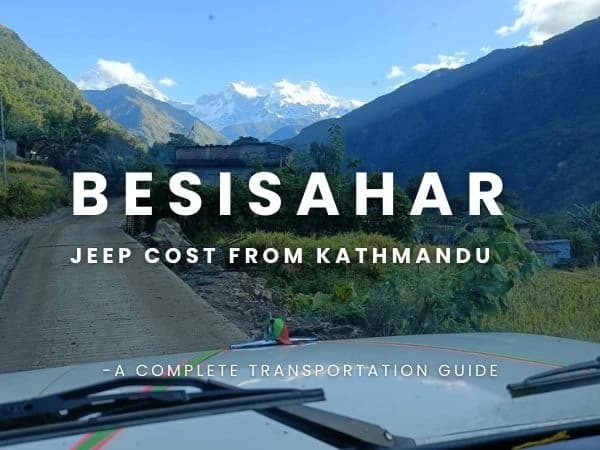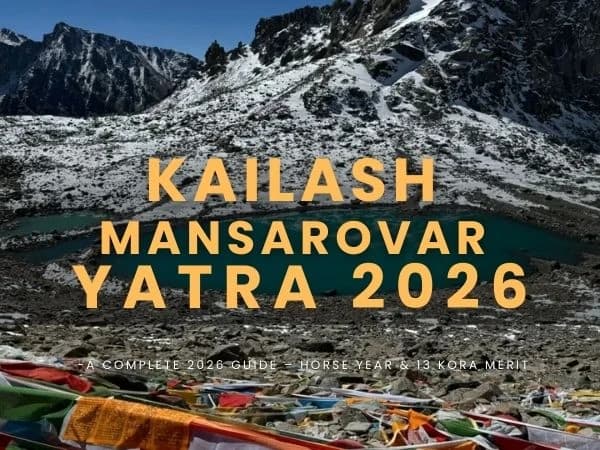1) Kathmandu Durbar Square:
Located in the heart of the city and just a few minute's walk from Thamel, Kathmandu Durbar Square is one of the popular sites for Hindu and Buddhist pilgrimage. Also known as, Hanuman Dhoka palace/Basantapur, the Durbar Square area has several attractions like temples, chokes, and statues dating back to the 12th century.
The outer and inner complex of the site has numerous famous pagoda-style temples highlighting the marvelous Newari architecture like Taleju Bhawani temple, Kumari Ghar, Shiva-Parbati temple, and Maru Ganesh, the statue of Kal Bhairav, Jagannath temple, and Kasthmandap. While the outer complex highlights the meticulously carved façade, the inner complex is the home of the Shah and Malla dynasty, turned museum that has collection of ancient art and architecture.
Major attraction:
- Kumari Ghar: Located at the south entrance of Durbar square, Kumari Ghar is a three-storied building with lavish woodcarvings. Inside the Kumari Ghar lives Kumari, considered the reincarnation of the Hindu Goddess Taleju (Durga). Every day on the premises (courtyard) of the site, worshippers gather with a hope to catch a glimpse of the Living Goddess. The selection process of Kumari is one of the fascinating things you will discover during your trip to the Durbar Square area.
- Taleju Temple: Built in 1564 by Mahendra Malla, Taleju temple is one of the tallest temples in Nepal. The 35m high temple is dedicated to the goddess Taleju Bhawani, the royal goddess of the Malla kings in the 14th century. The temple is opened to the public once a year on the 9th day of Dashain. The temple houses a golden statue of the goddess Taleju Bhawani and Kumari guarded by the stone lions outside.
- Kal Bhairav: Kal Bhairav is one of the largest stone statues in Kathmandu dating back to the 17th century. The statue depicts the terrifying aspect of Lord Shiva.\
- Museum: The Tribhuvan Museum homes several things used by King Tribhuvan during his regime. From his bedroom to the study room, the museum is filled with King's belonging that can give us a look into his life back then. The photographs and coin collection says a lot about the king's life and interest.
2) Swayambhunath (Monkey Temple):

Also known as, Monkey Temple, Swayambhunath is another important Hindu and Buddhist religious site. Located in the northwest of Kathmandu, the stupa rests on a hillock offering a majestic panorama of the Kathmandu valley. The stupa is believed to be self-sprung from a lotus flower blooming in the middle of the lake over 2000 years ago. Around the stupa of Swayambhunath are other numerous shrines and monasteries.
The entire structure of the Swayambhunath stupa is deeply symbolic, where the white dome represents the earth, 13 tiers at the top represent 13 stages of enlightenment, the nose-like structure below the compassionate eyes represents unity, and the third eye signifies the all-seeing insight of the Buddha. The base of the stupa is circumscribed by prayer wheels carved with the sacred mantra Om Mane Padme Hum (Hail to the jewel in the lotus). The surrounding of the Swayambhunath is truly magical with the fluttering prayer flags, chants of the monks, local shops selling souvenirs, playful monkeys, and incredible sights of the city.
Major attraction:
- Peace Pond: Located on the western side of Swayambhunath is a small pond named, World peace pond. In the middle of the pond is a brass statue of Buddha standing on a lotus flower.
- Harati Temple: The Pagoda-style Harati temple is located on the side of the Swayambhunath stupa and is considered the deity of smallpox and the protector of Buddhism. Visitors visit the temple to offer prayers to protect their children from disease.
- Dewa Dharma Monastery: Visit the monastery to meet the Monks and to witness bronze icons of Buddha along with the traditional Tibetan Paintings.
3) Pasupatinath Temple:

Located at the bank of the holy Bagmati River, Pashupatinath is the sacred Hindu religious site dedicated to Lord Shiva. Classified as a world heritage site in 1979, the site has an exotic collection of temples, shrines, and ashramas built centuries ago.
The main temple lies in the inner complex showcasing outstanding architectural beauty. The pagoda-styled temple has two-level roofs embellished with gold and silver doors. In front of the temple is a six feet high gold-plated Nandi. Inside the remarkable pagoda-styled temple is the sacred linga or halilic of Lord Shiva. Although pilgrimage visits the site every day throughout the year, a special crowd is gathered during Mahashivaratri, Teej, Harishayani Ekadashi, and Haribodhini Ekadashi.
The main restriction of the site is that only Hindus can enter the inner complex to offer their praying. The non-Hindu visitors can enjoy the vibe and have a look at the temple from the opposite bank of the Bagmati River.
Major attraction:
- Slesh Mantak Forest: The forest encircles the holy site, Pasupatinath, and homes monkeys and deer.
- Cremation Ritual: During your visit, you can observe the Hindu cremation ritual performed at the bank of the Bagmati River. It is believed that someone who dies in the surrounding temple is reborn as a human regardless of their sins or misconduct that could worsen their karma.
- Pasupatinath Aarati/Ganga Aarati: A huge crowd is gathered by the shores of the Bagmati River to enjoy the Bagmati Ganga Aarati. The vibe around the site during the aarti gives chills and a feeling of positivity, a special crowd is seen on Saturdays, Mondays, and other special occasions.
- Sadhus: Witness numbers of Sadhus presenting with unique appearance with yellow paintings on their bodies. The Sadhus you will see around the site are there to acquire liberation from the cycle of death and rebirth by meditating.
4) Boudhanath Stupa:

Also known as Boudha, Boudhanath is another important UNESCO enlisted cultural heritage site and a sacred Buddhist pilgrimage site. The site was declared a UNESCO World Heritage site in 1979 and is believed to be built in 600 AD by a Tibetan King.
The whitewashed dome shape of Boudha is approximately 43m high and 120ft in diameter and is considered the largest stupa in Nepal. The whole site is built in the Mandala shape, and the stupa resembles the Swayambhunath stupa with this dome shape body, compassionate eyes, and the 13 tiers of enlightenment. The fascinating part about the Boudhanath is it's surrounding. The narrow alleys and streets of Bouddha are filled with colorful homes, monasteries, street vendors selling souvenirs, local restaurants selling Tibetan dishes like Thukpa, Laphing, Khapse, and many more. Bouddha is also the perfect place to buy Thangka paintings and a singing bowl.
Major attraction:
- Restaurants selling a wide variety of Tibetan Dishes
- Visit the Guru Lhakhang Gompa situated opposite the Boudhanath stupa.
- Look out for Tibetan handicrafts like Thangka paintings, singing bowls, and other souvenir.
5) Patan Durbar Square:

Patan Durbar Square is recognized for fine arts and architecture. The site was announced as a UNESCO site in 1979, and is filled with Hindu temples, museums, Shrines, and Buddhist monuments. The Durbar Square is home to many impressive temples and courtyards like Krishna Mandir, Bhimsen Temple, Taleju Bhawani temple and Mul Chowk, Sundari Chowk, and Bhandarkal Garden.
Major Attraction:
- Krishna Mandir: Built in the 17th century by King Siddhi Narsimha Malla, Krishna Mandir is dedicated to Lord Krishna. One of the fascinating things about the temple is that it is made of stone and depicts some important scenes from the ancient Hindu epics of Ramayana and Mahabharat.
- Hiranya Varna Mahavihar: Also known as, the Golden Temple, Hiranya Varna Mahavihar is one of the historical Buddhist monasteries. The three-storied golden pagoda was built in the 12th century by King Bhaskar Varman and is famous for feeding rats.
- Vishwanath Temple: Dedicated to Lord Shiva, the Vishwanath temple is an outstanding masterpiece built-in 1627 by King Siddhi Narasimha Malla. The temple homes Shiva Linga and is guarded by two stone elephants at the entrance.
- Patan Museum: Patan Museum was inaugurated by King Birendra Bir Bikram shah in 1997 and holds the finest collections of arts and artscrafts. It also houses impressive traditional Newar crafts and bronze statues.
- Mul Chowk: Mul Chowk is the largest chowk within the palace area. Inside the Mul Chowk is an impressive temple of Taleju Bhawani and Degutale Temple, both dedicated to Taleju (Goddess Durga).
6) Bhaktapur Durbar Square:

Popularly known as the city of temples and a museum of Medieval art and architecture, Bhaktapur Durbar square is one of the most highly visited sites in Kathmandu valley. The complex consists of 4 different squares: Durbar Square, Taumadhi Square, Dattatreya Square, and Pottery Square. The former residence of the royal family, the Durbar square area is a masterpiece of traditional Newari architecture.
Major attraction:
- 55 windows palace: Built in the 15th century, the fifty-five-window palace is the main architectural structure of the Durbar square. The 55-window palace highlights the intricated woodcarvings of the Malla period along with the carvings of Asta Bhairav, Lord Ganesha, and Lord Kumar. You can also witness the battleground of Ramayana and drawings of different deities.
- Golden Gate: Built by Ranajit Malla in 1754 AD, the Golden gate is the entrance to the palace and another masterpiece of Bhaktapur Durbar Square. The gate has the figure of Hindu Goddess Kali and Garuda.
- Nyatapola temple: The five-storied Nyatapola temple is considered to be the tallest temple in Nepal, built with architectural perfection. Dedicated to Goddess Siddhi Laxmi, a powerful incarnation of Devi. The temple houses image of Siddhi Laxmi that stands almost 3.048m with 9 heads and 18 arms, the fierce manifestation of Shiva.
- Vatsala Temple: In the Shikhara style, the Vatsala temple is dedicated to the goddess Vatsala Devi (Durga) and was built by King Jitamitra and reconstructed by King Bhupatindra Malla during the 17-18th century.
- Pottery Square: Located nearby the Taumadhi square is the pottery square where you will get chances to see genuinely authentic Newari pottery kilns. You can observe the locals making or drying the clayware, or you can try some by yourself.
7) Chandragiri Hills:

Located in the South-West of Kathmandu valley, Chandragiri hill is one of the four hills surrounding the Kathmandu valley. Elevating at an altitude of 2551m, the hill is a perfect destination to enjoy the sights of Himalayan ranges from Annapurna to Everest.
Visitors can reach the hilltop location by hiking or via cable car ride. The cable car route is around 2.5km and takes 9-14 minutes, while the hiking trail is approximately 7.2 km, and is a 3 hours journey from Macchegaun, the base of Chandragiri hills. At the top of Chandragiri hill is the Hindu temple Bhaleshwor Mahadev. According to the Hindu Mythology, the forehead of Sati Devi, the first consort of Lord Shiva, had fallen on the site while Lord Shiva carried her dead body in rage. Apart from having religious significance, the site also has a historical significance as Prithvi Narayan Shah planned to make Kathmandu the capital of a unified Nepal after his stay on the hill.
The temple complex consists of idols of multiple Gods and Goddesses. At the side of the temple is a view tower, restaurants, gift stores, a park for children, and many more.
Major Attraction:
- Enjoy the panorama of the Himalayas and city from the top of the hill.
- Exciting cable ride above the lush woodlands of the region.
- Hike through the rich landscape of the region.
- Explore the historical and religious importance of the hills.
- Tourist standard restaurants
✔ Know more in details about - Chandragiri Cable Car Day Tour
8) Nagarkot:

Elevating at an altitude of 2195m, Nagarkot is a popular hill station of Nepal that offers majestic sights of the city, the Himalayas like Everest, and not to forget the magical sunrise and sunset views. Although people adore Nagarkot for the sights, there are other numerous enchanting places and things to do during your Nagarkot visit.
Things to do:
- Hiking in Nagarkot: You can easily arrive at Nagarkot via vehicle. However, if you are an outdoor enthusiast, you can opt for hiking to Nagarkot from Changunarayan temple. The uphill journey from Changunarayan temple is outstanding, as you will get the opportunity to connect with the locals and hike along with the terraced fields, passing local villages and through the lush woodlands.
- Cycling: Apart from hiking, visitors can also choose to enjoy intoxicating downhill cycling to Bhaktapur. The downhill cycling journey from Nagarkot to Bhaktapur passes through the local village and farmlands.
Places to visit in Nagarkot:
- Nagarkot Buddhist Monastery: Located a few steps ahead of Nagarkot tower, the Nagarkot Buddhist monastery is still hidden from many visitors.
- Nagarkot View tower: Anyone who has been to Nagarkot cannot miss visiting the view tower. Climb the staircase and admire the beauty of the hills and Himalayas as the cool breeze freshens your mind and soul.
- Muhan Pokhari: The waterfall of Nagarkot, Muhan Pokhari is another popular destination among the locals. The serene beauty of the area is perfect to capture some memorable pictures.
✔ Know more about Kathmandu Nagarkot Private Day Tour Package
9) Narayanhiti Palace:

Naraynahiti Palace is the former residence and workplace of the kings of Nepal. The palace turned museum is one of the historically important places because of the Royal Assassination of 2001. The palace was opened to the public in February 2009 after King Gyanendra stepped down as a monarch.
The palace homes almost every furniture, painting, and art collection that has been in the palace for centuries. Out of 52 rooms of the palace, only 19 rooms are opened to the public.
Major attraction:The rooms are named after the different districts of Nepal and have unique features.
- Kaski Room: Major events like welcoming foreign heads of state and oath-taking ceremonies of the prime minister were held in this room.
- Myagdi Room: In the Myagdi room, different heads of constitutional organs, and ambassadors were given refreshments.
- Dailekh, Baitadi, and Accham room: The rooms were divided for the foreign president (Dailekh room), his wife (Baitadi room), and close relatives (Accham room).
- Bajura and Jumla: Jumla room is where the foreign chiefs would dine and sleep in Bajura Room.
- Mugu Room: In this room, different materials used by King Tribhuvan shah are kept immaculately.
- Dhading and Dhankuta: The Dhankuta room was used as King's bedroom, while the Dhading chamber was the King's resting room.
- Fountain garden: Located just behind the palace is the fountain garden made by King Tribhuvan.
10) The Last Resort:

Apart from the historical and religious sites, another enthralling thing about Nepal is the adventurous activities that Nepal offers to its visitors. Among dozens of recreational activities one can do during their trip to Nepal, Bungee Jumping and white river rafting in the Last Resort are must-to-do activities.
Located three hours away from Kathmandu, the Last Resort is nestled amid the beautiful nature and is home to one of the tallest bungee jumps in the world (161m). With the Bhotekoshi river flowing close by, visitors can do rafting and bungee or anyone during their visit to Last resort.
Major attraction:
- Enjoy the walk around the resort
- White River rafting
- Delicious food served at the resort
- Bungee jumping
- Scenic drive along the Nepal-Tibet Highway.
Conclusion:
Although we have missed some of the other sightseeing spots of Kathmandu, the top 10 sightseeing spots mentioned in the blog are the most intoxicating ones. From walking around the world heritage site discovering the religious and historical significance to letting your adrenaline rush via the cycling, bungee, and rafting, you can do it all in a single trip to Kathmandu.
So, what are you waiting for? Pack your bags and visit Nepal to explore the rich culture, delicious local foods, and to experience the warmest hospitality.
Related Trips:
✔ Kathmandu Valley Trek
✔ Popular Hiking Places in Kathmandu
✔ Things to do in Chitwan
✔ Best Season for Rafting in Nepal














